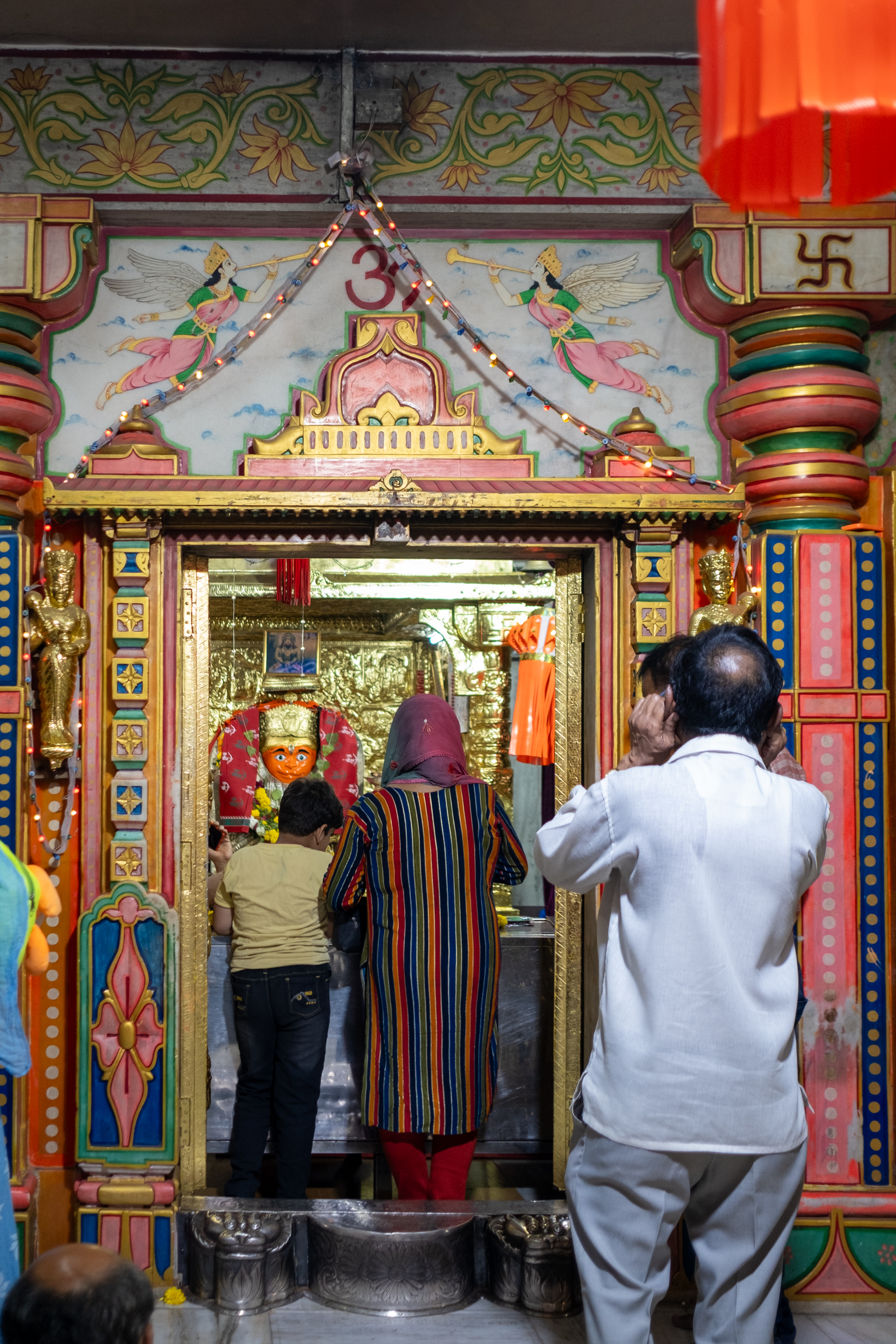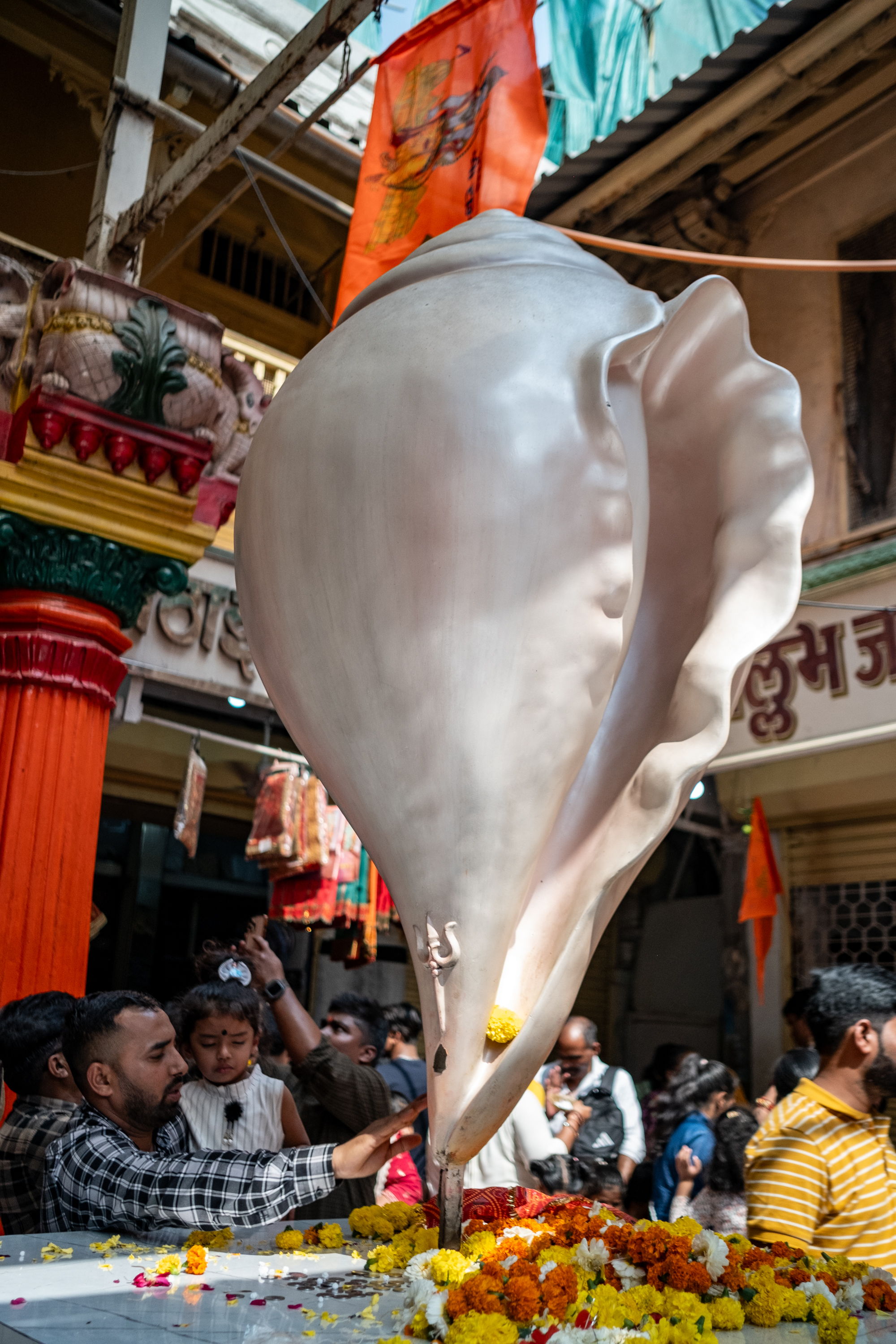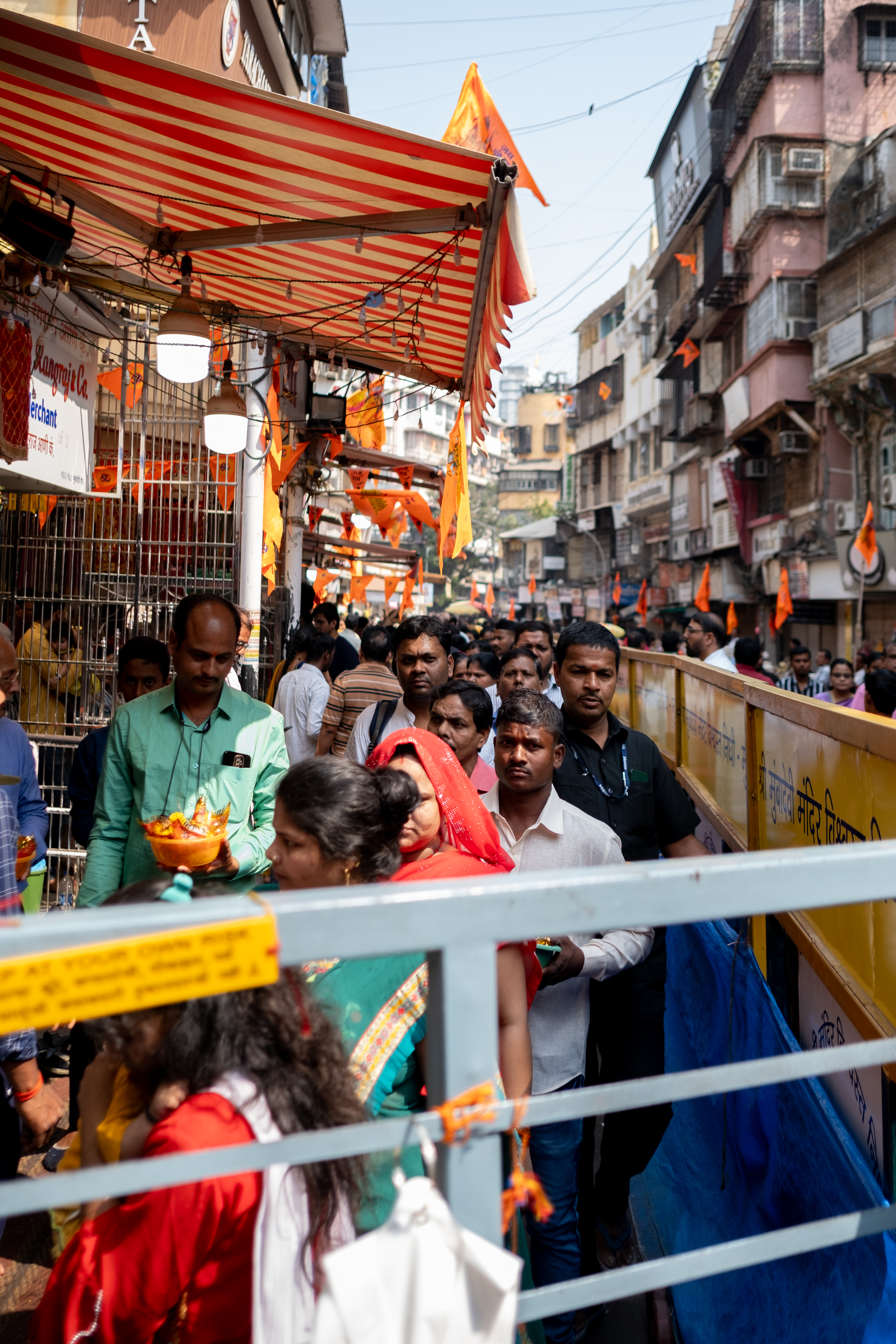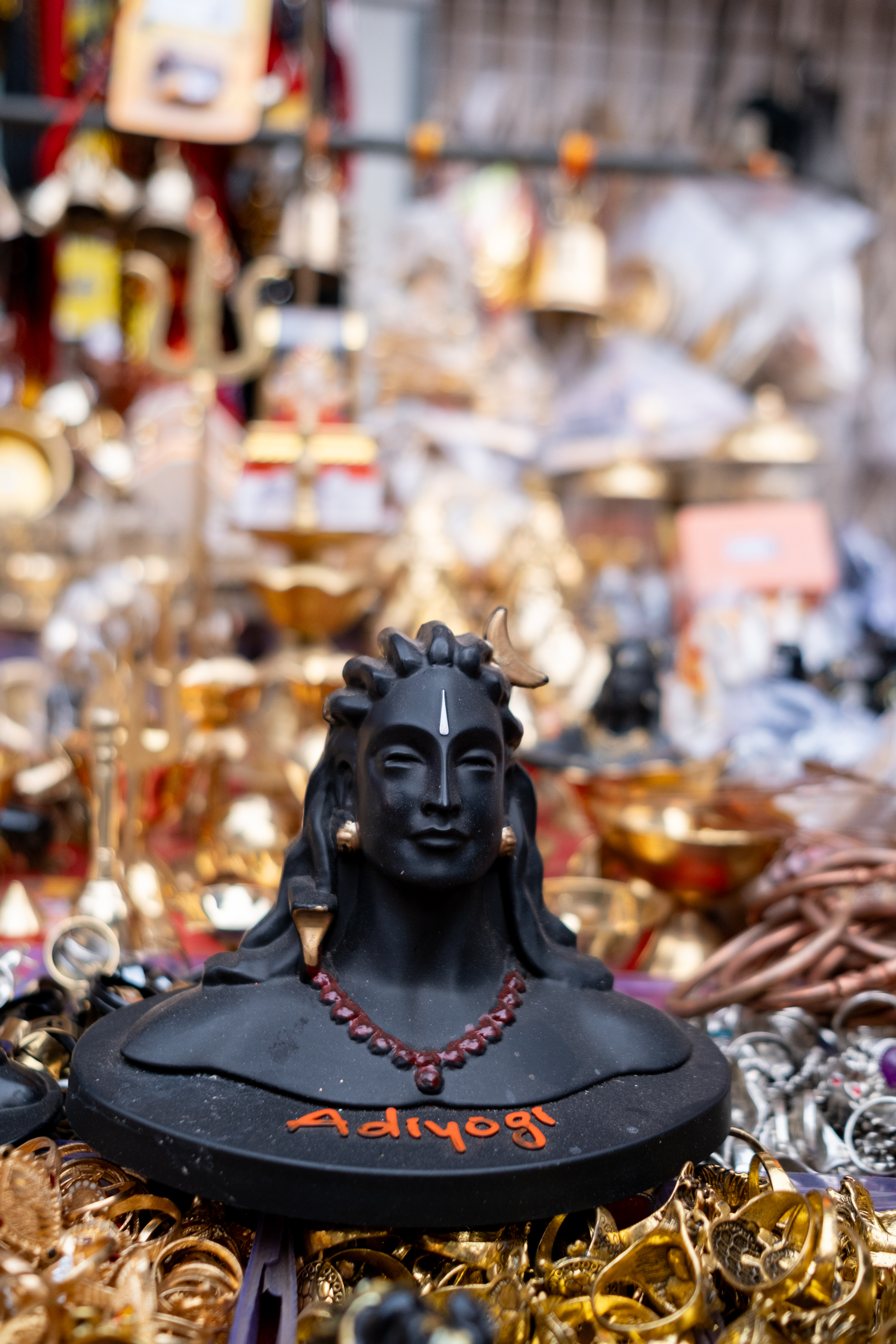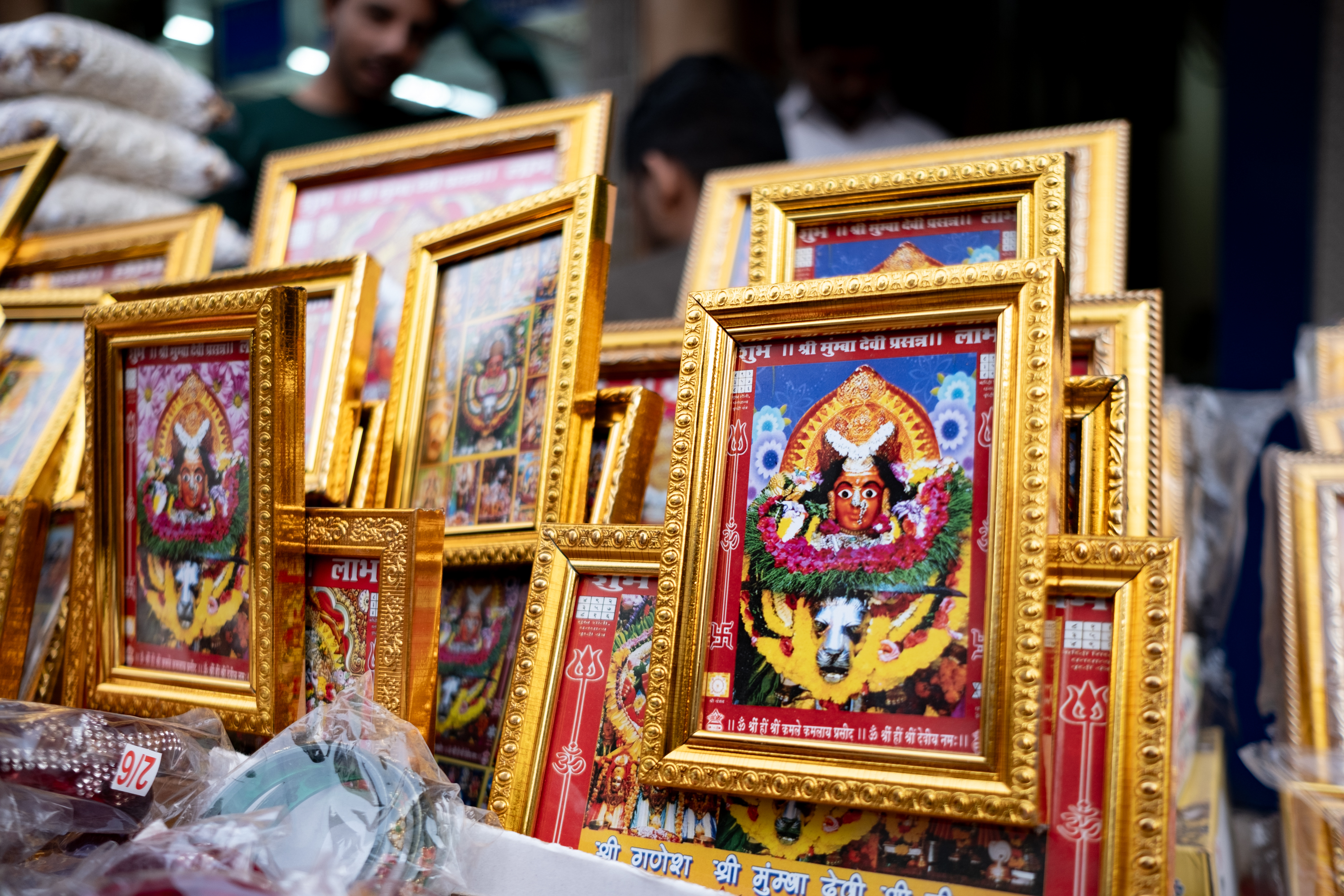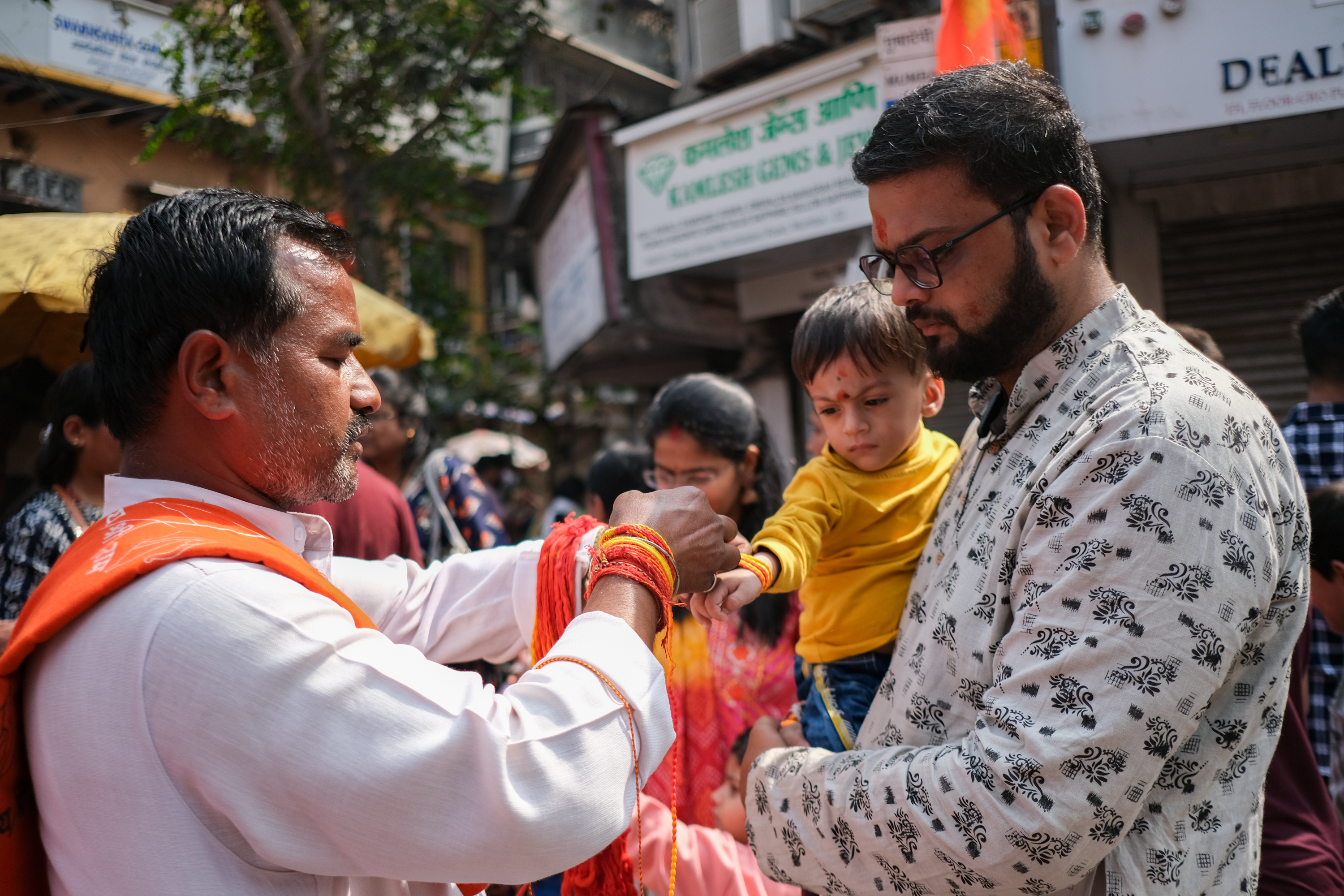Mumba Devi Temple
Mumbai originally consisted of seven islands and adjacent coastal areas. Various indigenous communities, including the Kolis, who were primarily fishermen, inhabited these sparsely populated islands over the centuries. The first Europeans to explore the region were the Portuguese, who arrived in 1508 and took control of the islands in 1534. In their maps and surveys, the Portuguese colonial administration referred to the archipelago as "Bombaim," which is likely to have originated from the Portuguese words "Bom Baía," meaning "Good Bay," in reference to the deep natural harbor. When the British Crown took control of the territories in the 17th century, they anglicised Bombaim to Bombay, the popular name by which the city was known around the world.
Bombay was renamed Mumbai in 1995, honouring its Marathi heritage and reflecting the local pronunciation and cultural identity. The name "Mumbai" is believed to derive from Mumba or Maha-Amba, the name of the goddess Mumba Devi. The suffix ai, meaning mother in Marathi, completes the name, translating as ‘Amba; The Great Mother’. Mumba Devi is believed to be an incarnation of the goddess Parvati, the consort of Lord Shiva, who is considered the primordial energy (Shakti) behind the universe's creation and the life force that sustains it. The Kolis regard Mumba Devi as their patron deity, and they pray to her before venturing out to sea.
The first temple dedicated to Mumba Devi is believed to have been founded by a Koli fisherwoman named Munga, after whom the shrine, Mungachi Amba, was named. Originally, the temple stood on the esplanade. In the 18th century, the British East India Company decided to improve the fortifications around the old Fort, which required clearing of land. As a result, the East India Company relocated the Mumba Devi Temple from its previous location on the Esplanade to its current location in Bhuleshwar, a neighbourhood in southern Mumbai. Pandurang Shivaji, a goldsmith, financed the construction of the new temple around 1737 (or 1766 in some versions; the exact date is unclear). A few decades later, in 1830, a Vania lady named Putalibai provided funds to build a tank adjoining the temple to allow pilgrims to perform ablution before entering the premises (later, in the 1950s, this tank was filled up to make space for car parking).
Bhuleshwar’s strategic location close to the European quarters in the old fort made it an attractive neighbourhood for traders and merchants to settle and run their business operations. Large-scale migrations from Kathiawar, Marwar, Kutch, and Saurashtra regions, plagued by famine, epidemics, and drought, occurred in the 17th and 18th centuries. Various mercantile communities, including Gujaratis, Marwaris, Jains, and Parsis, settled in Bhuleshwar and adjoining neighbourhoods like Kalbadevi and Pydhonie. The presence of diverse communities brought different religious practices, festivals, and cultural traditions, making Bhuleshwar a melting pot of cultures and architectural styles.
The 19th century saw Bhuleshwar develop into a bustling commercial hub, known for its wholesale markets such as Crawford Market (Mahatma Jyotiba Phule Mandai) and Zaveri Bazaar, famous for jewellery and textiles. The houses, shops, and temples at Bhuleshwar drew inspiration from the vernacular architecture of Gujarat and Rajasthan, regions from which the communities had migrated. It is interesting to note that, though the origin of Mumba Devi is in Mumbai, the architecture of the temple is inspired by 19th-century Gujarati temple architecture, reflecting a change in patronage with the shifting of the temple premise in a neighbourhood dominated by mercantile communities from Gujarat and Rajasthan who assimilated a local Koli goddess within the larger pantheon of Shakti goddesses by associating her with the goddess Durga.
Inside its premises, Mumba Devi Temple has shrines dedicated to Mumba Devi, Hanuman, and the goddess Annapurna (another manifestation of Shakti, the provider of food and nourishment). A silver crown, a diamond nose ring, and layers of gold jewellery adorn the main idol of Mumba Devi. Her vahana (mount) is a tiger, placed in a metal frame in the mandapa (congregation hall). The complex also has shrines established by the Vaishnava community with deities that are popular in Gujarat and Rajasthan, like Sri Krishna, Radha, Lakshmi, Balaji, Jagannath, and Narayana, among others. The temple celebrates Navratri, which spans over nine nights (and ten days), first in the month of Chaitra (March/April of the Gregorian calendar) and again in the month of Ashvin (September–October). Furthermore, during the months of Magh and Aashad, the temple holds two additional Navratris in secret, known as gupt Navratris. The Hindu lunar month of Chaitra also celebrates Hanuman Jayanti with great enthusiasm on the full moon day, known as purnima.
Hundreds of shops surround the main temple, selling religious paraphernalia to pilgrims visiting it. These include sweet shops, small eateries, prasad shops, flower shops, souvenir shops, bangle shops, jewellery shops, and various other services, such as pandits offering spiritual rituals on behalf of devotees. Street-side vendors sell items such as flowers, garlands, coconuts, incense sticks, camphor, and other offerings needed to offer puja. Many other professions are directly or indirectly dependent on temple activities, having been in business for multiple generations. This way, Mumba Devi Temple helps to sustain the local economy and provides a source of livelihood for hundreds of families. Bhuleshwar has other significant temples, such as the Bhuleshwar Temple, dedicated to Lord Shiva, and the Swaminarayan Temple.
One of Mumbai's oldest and most revered temples, Mumba Devi Temple, honours Mumba, also known as Maha-Amba, the city's patron deity.
A Koli fisherwoman installed the old shrine to Mumba Devi on the Esplanade, just outside the British Fort, according to the popular narrative. The British East India Company provided land in 1737 for the relocation of the temple to Bhuleshwar.
A shrine dedicated to the goddess Annapurna (pictured), the provider of food and nourishment. Annapurna and other mother goddesses represent the primordial energy (Shakti) behind the universe's creation and the life force that sustains it.
Vaishnava communities with Gujarati roots patronise shrines dedicated to manifestations of Lord Vishnu, such as Sri Krishna, Jagannath, and Narayana.
A shrine dedicated to Prithvi Mata (mother Earth), Lakshmi, and Narayana, one of the forms and epithets of Lord Vishnu.
Just outside the Radha Krishna temple stands a pair of wooden horses, likely part of a chariot used during processions.
Shrine dedicated to Lord Hanuman. Tuesdays are the busiest days, as worshippers visit the temple to pray to Lord Hanuman.
Makaras, with a floral scroll emerging from its mouth, form the central arch. On the left, decorative stuccowork showcases the ten-armed Durga (Mahishasurmardini), while a musician plays the sitar on the right.
A giant conch in the mandapa represents the historical bond between Mumba Devi and the Koli fisherfolk, who depend on the sea for their livelihood.
Makara capitals are supported by pillars. Makara is a legendary sea creature that appears as the vahana (mount) of Ganga, the river goddess, and Varuna, the god of oceans.
The base of a deepa stambha, a tower for placing oil lamps, is a unique feature in Hindu temples in Maharashtra.
During Navratri and other Hindu festivals, large crowds stand in long lines for the darshan of Mumba Devi.
On their way to work, office goers offer a quick prayer from the street outside the temple premises.
The shop sells puja ingredients such as flowers, garlands, coconuts, incense sticks, camphor, and other essential items for Hindu rituals.
Many shops in the vicinity of Mumba Devi Temple have been in business for generations. For example, Ram Jagannath Jaipurwale has been selling sweets and puja ingredients to pilgrims for three generations.
Mumba Devi Temple is located in the midst of bustling wholesale markets, famous for jewellery and textiles.
Shop selling sindoor (vermillion), churis (bangles), and bindis, essential items for married Hindu ladies.
The shop sells essential items for married Hindu ladies, such as sindoor (vermillion), churis (bangles), and bindis.
Images of Mumba Devi are available in shops. According to legend, Koli fishermen retrieved the self-manifested image (swayambhu) from the seas surrounding Mumbai.
Pandits offer their services for conducting religious rituals, tailor-made for the devotee's budget and personal needs.
The store sells conches, cowries, rudraksha beads, and metal rings. In the past, people used cowries as a form of currency and associated them with Lakshmi, the Hindu goddess of wealth, fortune, and prosperity.
A banner bearing the temple's name in the Devanagari script obscures the view of an elevated platform with the goddess Durga as Mahishasurmardini (slayer of Mahishashura).






